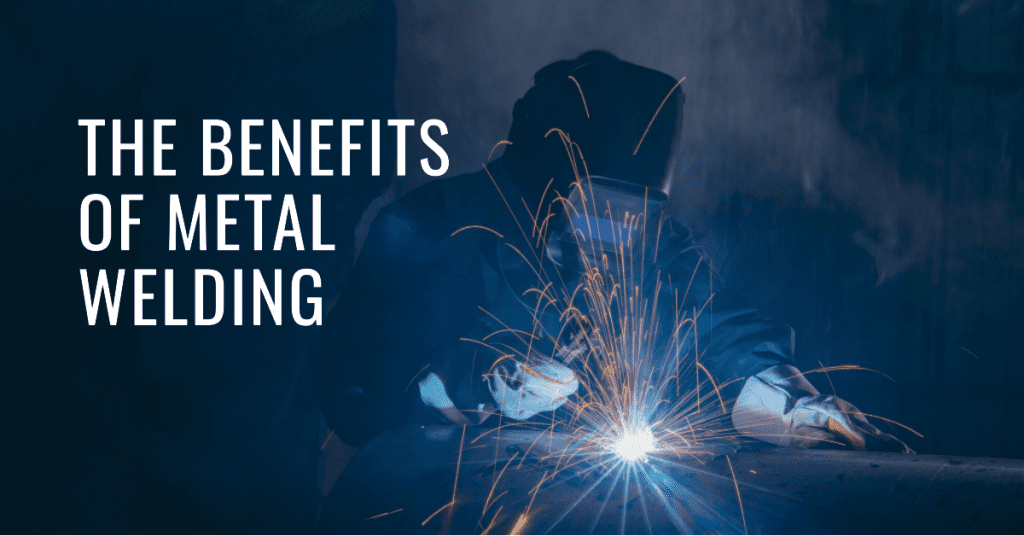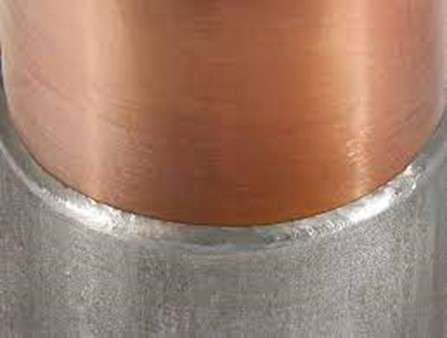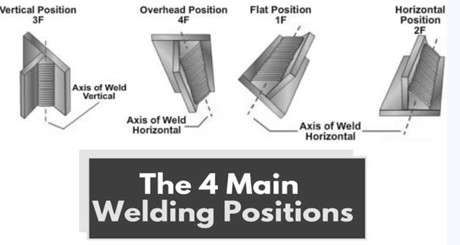
Metal welding process
Metal joining is a significant aspect of the manufacturing sector. The creation of simple parts to complex shapes parts demands metal joining operations. There are several joining techniques, including welding, brazing, soldering, riveting, and adhesive joining. However, metal welding is the preferred one in the majority of scenarios.
Welding is on the practice since ancient times. People used to heat and hammer metal pieces to make tools, weapons, and other items. Then, welding has been changing over time. In the 19th century, the industrial revolution led to the creation of electric arc welding. In the 20th century, welding methods like gas, resistance, and atomic hydrogen were invented. Today, welding continues to evolve and advance with the development of new technologies such as spot welding, laser welding, ultrasound welding, and friction welding.
In this article, we will examine the advantages of metal welding to understand why it is a preferred manufacturing process.
Related resource:
Fitup Tolerances for Mechanized Gas
What is Metal Welding?

Welding joint
Welding is a manufacturing process in which two or more parts are joined together by applying heat, pressure, or both. It is mainly utilized for metallic and thermoplastic materials. The welding created by heat is referred to as “Thermal welding”, and when the joint is made with intense pressure, that is called “Pressure welding”.
The thermal welding process involves heating the materials at joining positions above the melting point, which causes them to fuse together. In some welding processes, a filler material like a rod, wire, or powder is added to the joint to help create a stronger bond. Some popular thermal welding techniques include arc welding, gas welding, laser welding, and electric beam welding.
Unlike thermal, pressure welding uses mechanical force (or pressure) to fuse the metal parts together. There are several types of pressure welding, including forge welding, cold welding, and friction welding.
Eight Advantages Why Metal Welding is a Preferred Manufacturing Process
There are few techniques to create permanent metallic joints besides weldings, such as riveting, bolting, and adhesion. However, welding is the prominent approach because it offers several benefits. Let’s go through some of its advantages in depth.
1. Excellent Strength of Joints
One of the most significant benefits of metal welding is the stronger binding. The heat and pressure applied during the welding process cause the metal to melt and fuse together as the metal cools and solidifies, forming a solid joint between the parent metals.
The original strength does not depreciate, but it might increase when using filler materials. However, the joint strength also depends on other factors: weld quality, the strength of the parent material, and operator skills.
Welding offers high joint strength than riveting, bolting, and adhesion joining. The melting and solidification in the welding position create highly rigid and strong bonds, making it ideal for high-stress applications.
2. High Precision Control with Welding
Precise metallic joints are possible with welding techniques. It allows for accurate control of the weld location and size. There are different specialized equipment and techniques to achieve precise welding. For example, Gas Tungsten Arc Welding, one of the most precise welding techniques, can maintain welding tolerances as low as ±0.005 inches. In addition, other approaches like TIG welding, MIG welding, and laser welding are also renowned for their precision and accuracy (EICHENBERGER, 1982).
The shape and size of the weld can be controlled by adjusting the welding parameters, such as current, voltage, feed rate of filler, electrode size, and shielding gas composition, even on complex or irregularly shaped parts.
Welding is considered to be the most precise method of joining metal parts together, followed by bolting, riveting, and adhesion. Therefore, welding is preferred until there is a requirement for other specific joining methods based on materials, the size and shape of the parts, and the desired outcome.
3. Welding Speed
There are no other permanent metal joining techniques besides quick and less time-consuming welding. It takes a much shorter time to create welding joints, especially when compared to the time required to drill and tap holes for bolts or to place and secure rivets.
Since welding is a continuous process, it can weld an entire joint in one go, unlike riveting and bolting. This can significantly increase the speed of the manufacturing process, especially for complex structures. Automation is another factor that has contributed dramatically to the welding speed in manufacturing. The TIG–MAG hybrid arc welding speed could reach up to 3.5 m/min (2.5 mm thick mild steel) (Xiangmeng Meng, 2014).
4. Welding is a Cost-effective Approach
Welding produces less material wastage during the joining process. It involves fusing two pieces of metal together, which means less material is required to create a joint than other methods, such as bolting or riveting. It also requires fewer labor hours and does not require any additional maintenance. All these factors reduce the project’s overall cost, making it a preferred manufacturing process in many industries, especially for high-volume production and large-scale projects.
5. Superior Lifespan of Joints
The lifespan of welding joints is longer than the base (or parent) metals. Welding creates a metallurgical bond between the two pieces of metal, distributing stress more evenly across the joint and contributing to durability. Because of this, welded joints offer high resistance to vibration, impact, and thermal effects.
The type of welding used has a critical role in deciding how long any welding joints will last. Stick welding is renowned for its sturdiness and longevity in manufacturing processes. Although, other techniques like TIG and MIG also create a durable metallic joint that lasts almost equal to that of base metals.
6. Weld Requires Low (or No) Maintenance
Welding creates permanent joints between metallic pieces. They do not require additional maintenance (or low maintenance over time). In contrast, other types of joints, such as those created with mechanical fasteners, may require regular tightening or replacement of the fasteners.
Welding only requires general and inexpensive maintenance, such as cleaning or painting, to prevent rust and corrosion. And that is limited to a few applications.
7. Joining of Dissimilar Metals

Welding of steel and copper
Dissimilar metal parts or pieces can be joined together using welding techniques. TIG, MIG, Friction stir welding (FSW), and other welding techniques are popular in manufacturing to join dissimilar metals like aluminum and steel. The appropriate filler material is essential in such cases; a filler composition compatible with both different metals can be used to create the weld.
There could be some issues while applying to weld for dissimilar materials, cracking, warping, or poor weld quality. However, several techniques address these issues, such as pre-heating of base metals, correct weld sequence, and feed rate of filler.
8. Aesthetic aspect
After the welding process is complete, the surface of the welded joint might have surface defects such as porosity, undercutting, or excess weld metal. These welding defects can be removed through grinding, sanding, or other surface finishing techniques. With post-processing, welding joints do not alter the aesthetic view of the welding position. In comparison, other types of joints, such as rivets and bolts, change the appearance of parts.
It can be used to create beautiful and intricate designs & art, such as sculptures, furniture, and other decorative objects. Welding is also valuable for engraving automotive logos, trademarks, and other signs.
Try Prolean Now!
Welding: A Versatile Manufacturing Approach

Different welding positions
As previously mentioned, there are a large number of welding types in the manufacturing industry. Each of these welding techniques has its own advantages and is ideal for specific requirements. This means it offers the perfect solutions to countless problems based on the type of metal, the thickness, and the weld’s desired strength.
Following are some other examples of welding versatility in manufacturing;
- Welding can be done in various vertical, horizontal, and overhead positions, being the most flexible.
- Dissimilar metal pieces are possible to join with welding.
- Welding is compatible with small to large-scale parts. It can create precise welds regardless of complexity and size.
- It is used in automotive, aerospace, electronics, construction, repair & maintenance, medical, defense, and many more industries.
Summing Up
Welding is a preferred manufacturing process because of its advantages, including strength, versatility, cost-effectiveness, speed, precision, efficiency, and flexibility. It can be used for a wide range of projects, from minor repairs and prototyping to large-scale manufacturing projects, and can be used to join a wide range of metals together.
The precise & permanent joints can be created according to requirements through a welding approach. However, the quality of joints depends on the equipment’s quality, operator skills, and selection of welding type for particular specifications. ProleanTech can help with any welding needs. Our team includes experienced operators and engineers, and we have advanced welding machines. In addition to this, we also provide comprehensive sheet metal services. If you need to join any metal parts, don’t hesitate to contact us.
FAQ’s
What are the advantages of Metal Welding?
Welding offers several advantages, including excellent strength of joints, precision, versatility, cost-effectiveness, speed, flexibility, aesthetic appearance, durability, low maintenance, and many more.
How does welding increase the strength of joints?
The heat and pressure applied during the welding process cause the metal to melt and fuse together. As the metal cools and solidifies, strong metallic joint forms between the base metals. The strength of the joint may also increase with the use of filler materials.
How does welding compare to other methods of metal joining?
Welding is the most reliable and durable method of joining metal parts, followed by bolting, riveting, and adhesion. Therefore, welding is preferred for many applications, such as automotive, aerospace, electronics, and construction.
References
- EICHENBERGER, Y. P. (1982). Fitup Tolerances for Mechanized Gas Tungsten Arc Welding Large Diameter Pipe. SUPPLEMENT TO THE WELDING JOURNAL.
- Xiangmeng Meng, G. (2014). High-speed TIG–MAG hybrid arc welding of mild steel plate. Journal of Materials Processing Technology.




0 Comments